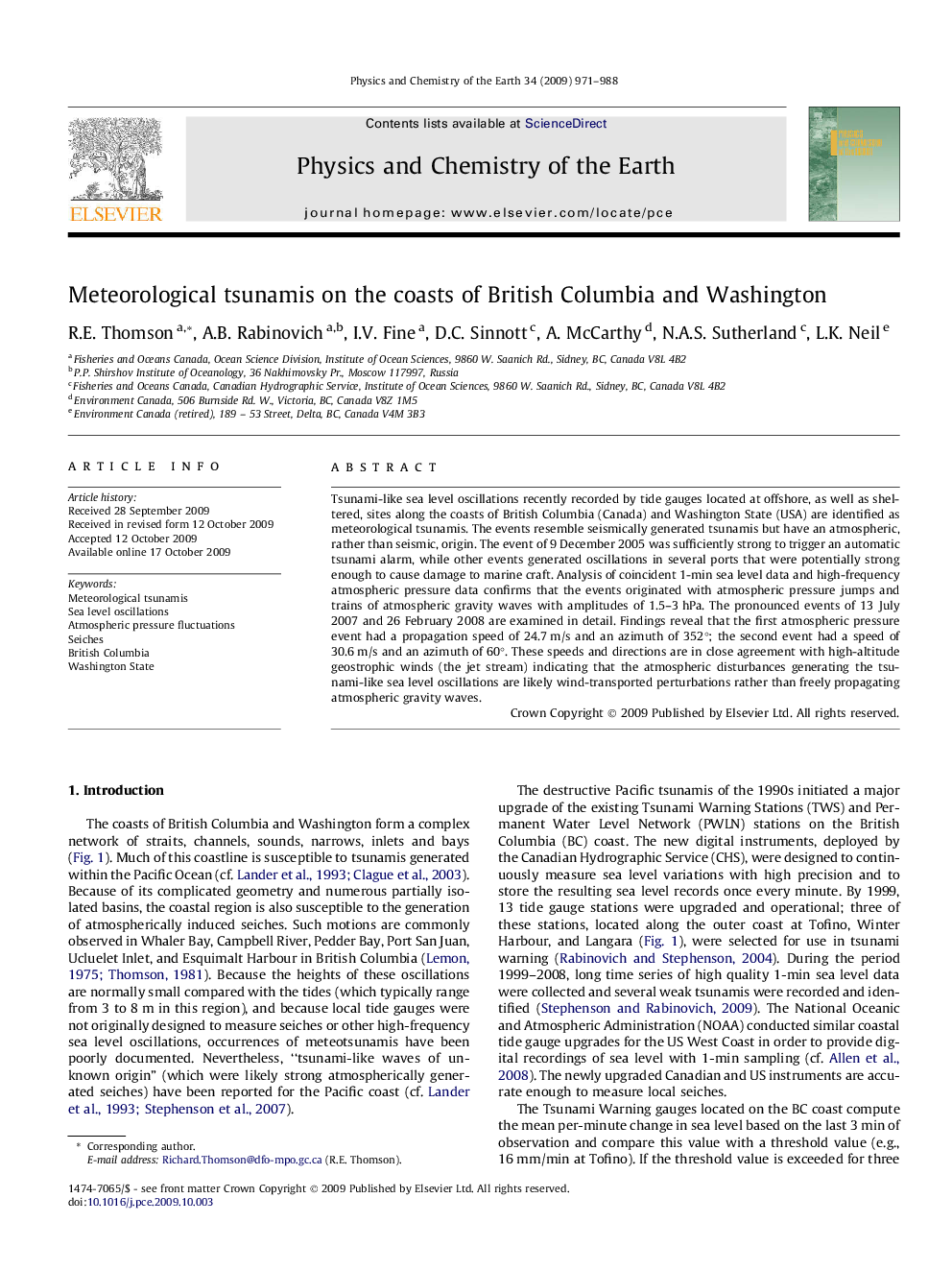| Article ID | Journal | Published Year | Pages | File Type |
|---|---|---|---|---|
| 4721536 | Physics and Chemistry of the Earth, Parts A/B/C | 2009 | 18 Pages |
Abstract
Tsunami-like sea level oscillations recently recorded by tide gauges located at offshore, as well as sheltered, sites along the coasts of British Columbia (Canada) and Washington State (USA) are identified as meteorological tsunamis. The events resemble seismically generated tsunamis but have an atmospheric, rather than seismic, origin. The event of 9 December 2005 was sufficiently strong to trigger an automatic tsunami alarm, while other events generated oscillations in several ports that were potentially strong enough to cause damage to marine craft. Analysis of coincident 1-min sea level data and high-frequency atmospheric pressure data confirms that the events originated with atmospheric pressure jumps and trains of atmospheric gravity waves with amplitudes of 1.5-3 hPa. The pronounced events of 13 July 2007 and 26 February 2008 are examined in detail. Findings reveal that the first atmospheric pressure event had a propagation speed of 24.7 m/s and an azimuth of 352°; the second event had a speed of 30.6 m/s and an azimuth of 60°. These speeds and directions are in close agreement with high-altitude geostrophic winds (the jet stream) indicating that the atmospheric disturbances generating the tsunami-like sea level oscillations are likely wind-transported perturbations rather than freely propagating atmospheric gravity waves.
Related Topics
Physical Sciences and Engineering
Earth and Planetary Sciences
Geochemistry and Petrology
Authors
R.E. Thomson, A.B. Rabinovich, I.V. Fine, D.C. Sinnott, A. McCarthy, N.A.S. Sutherland, L.K. Neil,
